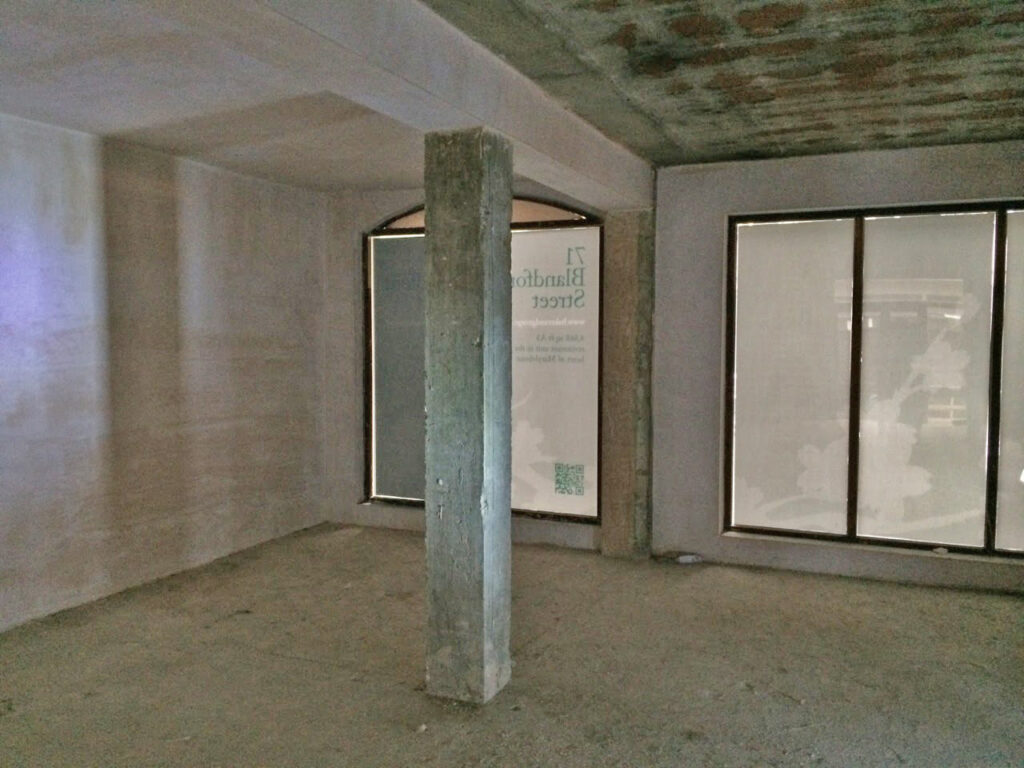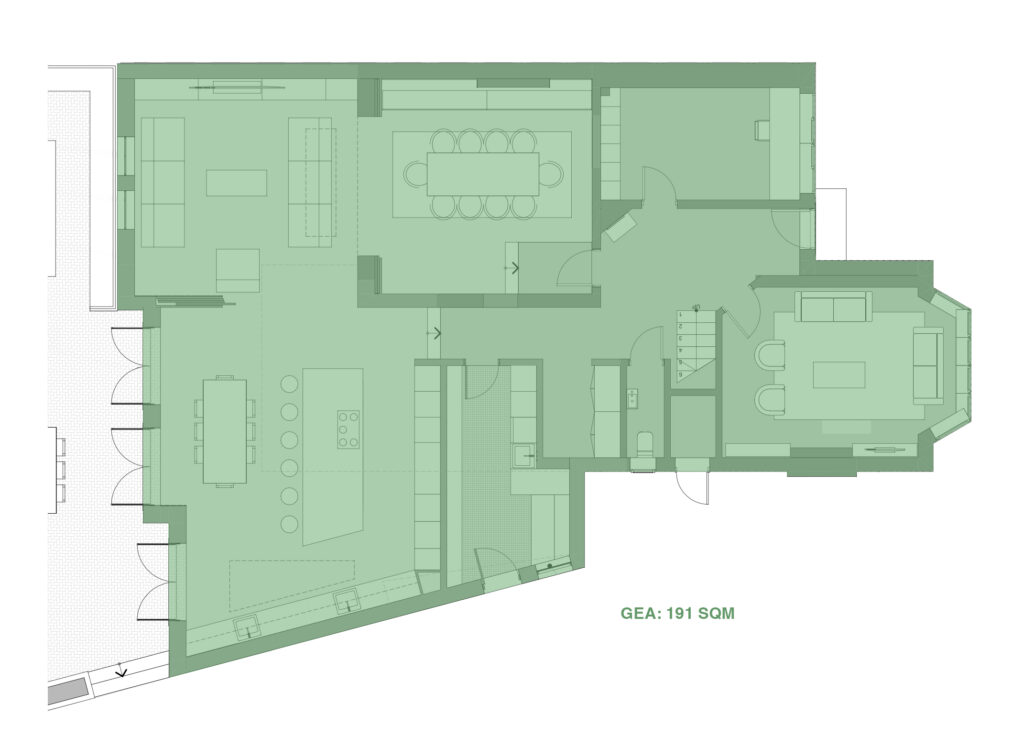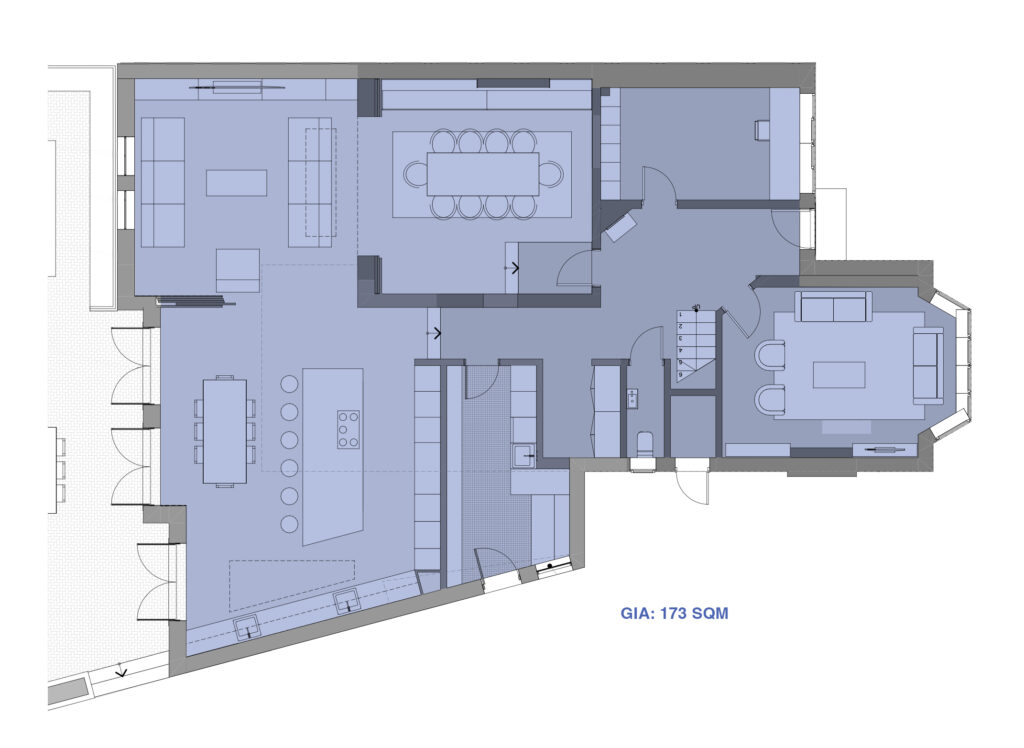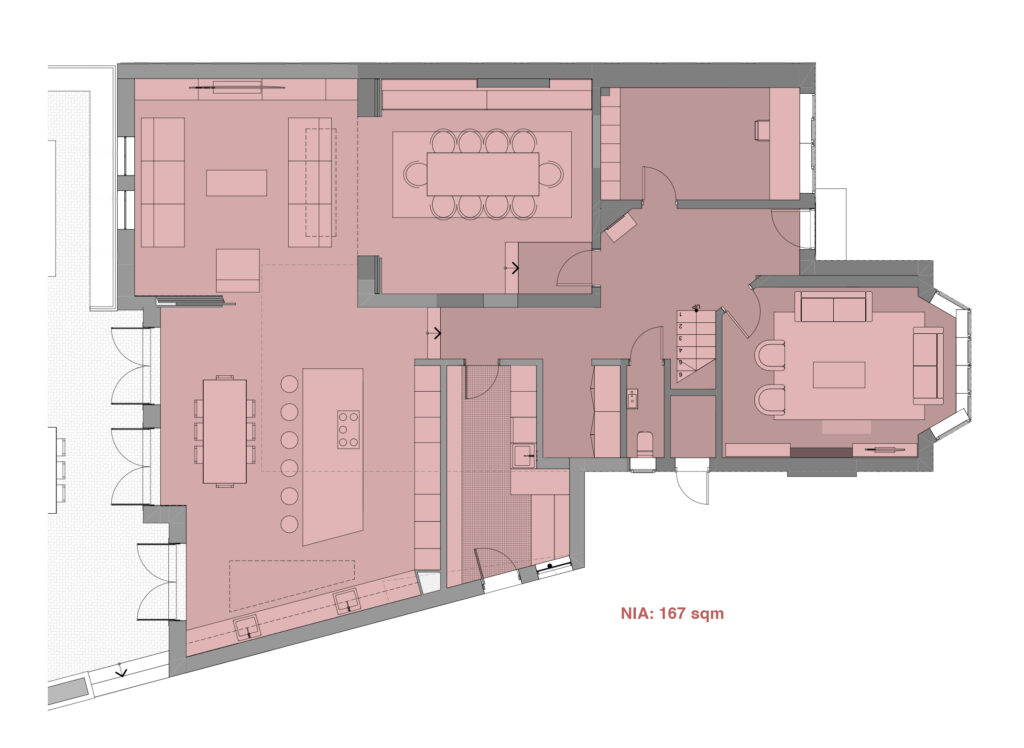As an architecture studio, it is crucial to have a thorough understanding of building measurements, as they dictate how the final structure will look and function. In this blog, I will provide an in-depth look at the commonly used building measurements and their significance.

Gross External Area (GEA):
The GEA is the entire area of a building taking into account all floors. It is crucial to know GEA to plan spaces efficiently, especially for large projects where every square foot/meter counts.
Inclusions:
- Perimeter wall thickness and external projections.
- Areas occupied by internal walls, regardless of their structural significance.
- Columns, piers, chimney breasts, stairwells, lift wells, etc.
- Lift rooms, plant rooms, tank rooms, fuel stores, whether above roof level or not.
- Open-sided covered areas (should be stated separately).
Exclusions:
- Open balconies, fire escapes, and covered ways.
- Open vehicle parking areas, terraces, etc.
- Minor canopies.
- Areas with headroom under 1.5m (except under stairways).
- Areas under the control of service or external authorities.
Note that party walls are measured to their centre lines and the areas of items excluded from GEA should be calculated and shown separately.

Gross Internal Area (GIA):
The GIA is the total enclosed area within a building’s external walls, excluding the thickness of those walls. This measurement is vital for calculating usable floor space and is key for planning how to divide internal spaces effectively.
Inclusions:
- Areas occupied by internal walls, partitions, and structural elements.
- Service accommodation such as WCs, showers, and changing rooms.
- Columns, piers, whether free-standing or projecting inwards from an external wall, chimney breasts, lift wells, stairwells etc.
- Lift rooms, plant rooms, tank rooms, fuel stores, whether above roof level or not.
- Open-sided covered areas (should be stated separately).
Exclusions:
- Open balconies, fire escapes, and covered ways.
- Open vehicle parking areas, terraces, etc.
- Minor canopies.
- Areas with ceiling height under 1.5m (except under stairways).
- Areas under the control of service or external authorities.
Note that the areas excluded from GIA should be calculated and shown separately.
Identification of Separate Buildings:
It is essential to identify what constitutes a separate building when using GIA as it excludes the thicknesses of external walls but includes internal ones. Elements not united in a common form of construction are regarded as separate buildings. Contiguous elements of similar construction are treated as a single building if more than 50% of the party wall has been removed.

Net Internal Area (NIA):
NIA is the usable area within a building measured to the internal finish of the perimeter or party walls. It is essential for calculating how much space is available for specific uses within a building.
Inclusions:
- Perimeter skirting, moulding, or trunking.
- Kitchens.
- Built-in units or cupboards (subject to height exclusion below).
- Partition walls or dividing elements.
- Open circulation areas and entrance halls, corridors, and atria.
Exclusions:
- Toilets and associated lobbies.
- Cleaners’ cupboards, lift rooms, boiler rooms, tank rooms, fuel stores, and plant rooms.
- Stairwells, lift wells, parts of entrance halls, atria, landings, and balconies are used for essential access.
- Corridors and other circulation areas used in common or of permanent essential nature.
- Areas under the control of service or other external authorities.
- Internal structural walls, columns, piers, chimney breasts, other projections, vertical ducts, etc.
- Space occupied by permanent air conditioning, heating, or cooling apparatus renders the space substantially unusable.
- Areas with headroom under 1.5m (should be shown separately).
- Car parking areas (should be shown separately).
NIA: Common terms
- Internal finish: The brick/blockwork or plaster coat applied to the brick/blockwork, not the surface of internal linings installed by the occupier.
- Essential access: This does not include reception areas or areas within entrance halls, atria, and landings.
- Permanent essential nature: Corridors excluded from NIA are of permanent essential nature, i.e., internal corridors between structural walls.
- Structural walls: Load-bearing walls are essential for structural stability.
- Partition walls: Ignored for measurement, except where defining excluded areas.
- Heights and site area terms: Various height measurements and site area descriptions are crucial for understanding spatial dimensions and site characteristics.

Conclusion:
Understanding building measurements is a fundamental skill for architects. They play a significant role in designing energy-efficient structures and reducing carbon footprints. In a world grappling with environmental challenges, architects can make a difference by having a deeper understanding of the space requirements and impacts of sustainable technologies.
If you would like to talk through your project with the team, please do get in touch at mail@risedesignstudio.co.uk or give us a call on 020 3290 1003
RISE Design Studio Architects company reg no: 08129708 VAT no: GB158316403 © RISE Design Studio. Trading since 2011.
